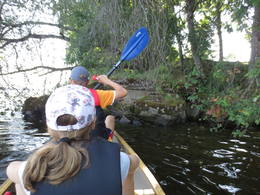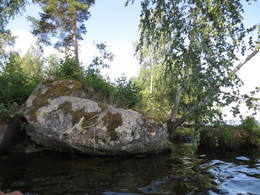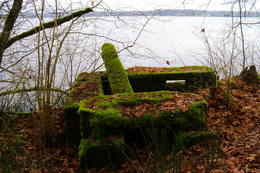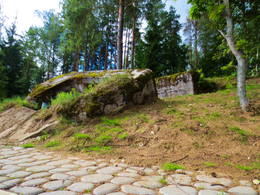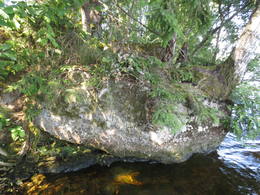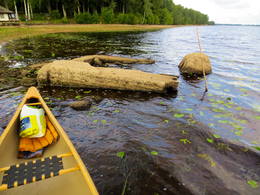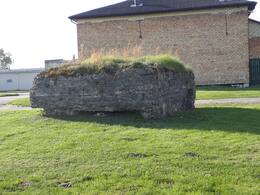Bemühungen, die Sprengung von Ķegums HPP zu verhindern
Während des Zweiten Weltkriegs wurde beim Rückzug der Armeen ein Großteil der militärisch und logistisch wichtigen Objekte in Lettland gesprengt, damit diese Ressourcen nicht bei den heutigen Gegnern verblieben. Solche Objekte befanden sich auch in der Nähe von Ķegums, wo eines der wichtigsten Objekte das HPP Ķegums ist, das jedoch aufgrund der Bemühungen und Mühen seiner Mitarbeiter nicht vollständig zerstört wurde.
Ich werde diesen Tag erzählen, wie ich es gehört und herausgefunden habe, als ich Dokumente für das Kegums History Museum gesammelt habe. Es sind einige Tatsachen bekannt, aber auch unbekanntere, die ebenfalls nicht vollständig geklärt werden dürften.
Im Wissen, wie die Deutschen alles in die Luft sprengen, war diese Perspektive auch den Menschen in Kegumi klar. Darüber hinaus, als die in Ķegums stationierte Wacheinheit, das Zonder-Team, mit dem Abbau der Brücke begann, dachten und arbeiteten Pāvels Krasovskis, der Direktor von Ķegums HPP, und wahrscheinlich auch seine Gleichgesinnten und Mitarbeiter, deren Namen wir nicht kennen, und arbeiteten aktiv um das Kraftwerk so weit wie möglich zu schonen. Krasovsky befahl den Zugang zu den Galerien unter dem Damm, um Sprengstoff zu verhindern. Als Jäger ging er auf die Jagd nach Sunāksti, obwohl sich die deutsche Selbstverwaltung bereits 1942 weigerte, die Genehmigung zum Halten von Jagdwaffen zu verlängern (Fakt). Aber tatsächlich traf er sich dort mit den Männern der Guerilla-Einheit, angeführt von Oshkalns, Samson. Sie scheinen vereinbart zu haben, dass Samson und seine Männer im September Kegums besetzen, die Bombardierung verhindern und sie bis zum Eintreffen der Russen halten werden. Dieser Plan ist auch der russischen Armeeführung bekannt. Dies wird durch die Tatsache belegt, dass Kegums nie durch die Bombardierung aller strategisch wichtigen Drehkreuze durch die russische Luftfahrt geschädigt wurde. Und die Tatsache, dass am 28. Juli eine Landung mit dem Codenamen „Red Arrow“ auf Toms Seite abgeworfen wurde, der möglicherweise mit Samson bei der Operation zusammenarbeiten musste. Aber auch die deutsche Spionagemaschine funktionierte, und Mitte September wurde die Landung vollständig zerstört. Krasovsky sagte seiner Frau, dass Samson nicht rechtzeitig angekommen sei. Samsons sagt, dass er aufgrund seines Verrats nicht nach Ķegums gehen konnte. Am selben Tag wurden in Ķegum auch Osmanis, der Vater des Dichters und Schriftstellers Jāzeps Osmanis, Bērziņš und Giruckis sowie HPP-Mitarbeiter festgenommen. Krasovsky wurde aus dem Rigaer Zentralgefängnis in das Lager Stutthof, dann in das Lager Sachsenhausen verlegt, wo er am 12. Februar 1945 starb (Bescheinigung des Internationalen Roten Kreuzes). Osman starb offenbar auf dem Weg von Stuthof nach Saxhausen. Aber Bērziņš war damals auf der Krankenstation, dann nach Sachsenhausen geschickt, aber auf dem Weg dorthin ließen ihn die Amerikaner frei, und als er nach Hause kam, arbeitete er im Kraftwerk und starb 1978. Nach diesen Verhaftungen wurde das Zonder-Team sofort ersetzt. Am zweiten Tag, dem 17. September, gab es den ersten Flug der russischen Luftfahrt nach Kegums, und dann waren viele Kegums bereits abgereist. Zum Direktor wurde der Baltendeutsche Bētiņš ernannt.
Wenige Tage vor dem Einmarsch der russischen Armee (am 7. Oktober) ließen die Deutschen ihre Minen frei. Beide langen Spannweiten der Brücke sind gesprengt, ein Segmentverschluss (aber die Staumauer und die Dämme sind dann intakt!). Alle drei Generatoren wurden im Maschinenraum gesprengt und dann ausgebrannt, ein Sprengstoff wurde in die vierte Turbine gefeuert und zwei Schaufeln wurden abgerissen (diese Turbine ist im Kegums History Museum zu sehen) und der Kontrollraum wurde ausgebrannt . Aber die Freiluftverteilungsanlage ist komplett zerstört, kein ganzer Transformator, Schalter, Messwandler, Stütze. Schrotthaufen! Und dieselben Deutschen mussten all diese Schäden beseitigen und die Ausrüstung wieder aufbauen, jetzt als Gefangene. Ihre Gebeine liegen immer noch auf dem Gelände des Schulstadions von Ķegums. Das Kraftwerk wurde in drei Jahren renoviert.
Haunzems, H. 1996. "Daugava und wir", S. 57-58
Zugehörige Zeitleiste
Zugehörige Objekte
Betonfeuerstelle der Bundeswehr im Wasserkraftwerk Kegum nahe der Nega-Einfahrt
Es befindet sich im HPP-Stausee Ķegum an der Nega-Einfahrt (vor den Nega-Häusern) an seinem linken Ufer. Einer der optisch und landschaftlich beeindruckendsten und auch am besten erhaltenen Betonkamine, von den Wellen der Düna umspült. Es kann von einem größeren Stück gesehen werden. Vom Ufer bis zur Feuerstelle (mit Gras bewachsen) wurde eine Fußgängerbrücke gebaut. In die Betonwände der Feuerwache eingelassene Gleise der Schmalspurbahn (?). Sie können von der Seite der Fußgängerbrücke hineingehen. Dies ist einer der Feuerpunkte der Verteidigungslinie der deutschen Armee während des Ersten Weltkriegs am linken Daugava-Ufer, der mehr oder weniger auf der gesamten Länge des linken Daugava-Ufers verfolgt werden kann. Die erwähnte Verteidigungslinie ist ein großangelegtes militärisches System, das bisher nicht wirklich als Ganzes bewertet wurde. Die Reste der Feuerstelle können mit dem Boot auf dem Wasserkraftwerk Ķegum besichtigt werden.
Betonfeuerstelle der deutschen Armee an der Spitze des Ufers des Ķegum HPP vor Andulii
Es befindet sich etwa 1,2 km östlich einer kleinen Verlängerung des Baches (der Bach fließt in der Nähe von Lejasgrantiniņi) an der Spitze des steilen Uferhangs des Wasserkraftwerks Ķegum vor Andulii. Die Küste an diesem Ort ist mit Wald und Unterholz bewachsen, sodass nur ein scharfer Beobachter diesen Brandpunkt von der Seite des Stausees aus bemerken wird. Der Feuerpunkt ist gut erhalten, da er nicht durch Küstenerosion beschädigt wurde. Dies ist einer der Feuerpunkte der Verteidigungslinie der deutschen Armee während des Ersten Weltkriegs am linken Daugava-Ufer, der mehr oder weniger entlang des linken Daugava-Ufers verfolgt werden kann. Die erwähnte Verteidigungslinie ist ein großangelegtes militärisches System, das bisher nicht wirklich als Ganzes bewertet wurde. Der Feuerpunkt ist mit dem Boot auf dem HPP Ķegum zu sehen, da er sich in einem privaten Bereich befindet.
Reste der Betonfeuerstelle der Bundeswehr im HPP-Stausee Ķegums vor Sidrabini
Es befindet sich etwa 0,25 km östlich der Bucht des Wasserkraftwerks Ķegum bei Silapūpēži, in Richtung Jaunjelgava, gegenüber dem Bauernhof Sidrabiņi. Der Brandherd ist teilweise ins Wasser gerutscht und in mehrere Teile zersplittert, die einem Bauschutthaufen ähneln. Die Küste ist überwuchert. Dies ist einer der Feuerpunkte der Verteidigungslinie der deutschen Armee während des Ersten Weltkriegs am linken Daugava-Ufer, der mehr oder weniger entlang des linken Daugava-Ufers verfolgt werden kann. Die erwähnte Verteidigungslinie ist ein großangelegtes militärisches System, das bisher nicht wirklich als Ganzes bewertet wurde. Die Reste der Feuerstelle können mit dem Boot auf dem Wasserkraftwerk Ķegum besichtigt werden. Etwa 150 m westlich des Daugava-Ufers sind die Reste einer weiteren Feuerstelle ins Wasser gerutscht.
Reste der Betonfeuerstelle der Bundeswehr im HPP-Stausee Ķegums vor Jaundauglii
Es befindet sich am Ufer des Wasserreservoirs Ķegum HPP, etwa 0,6 km östlich der Bucht Nega, vor Jaundauglii. Der Feuerpunkt ist vom Ufer ins Wasser gerutscht und in mehrere Teile zerbrochen. Zwei größere Birken sind darin gewachsen, ein Dickicht ist gewachsen. Ein Teil davon ist durch eine Fußgängerbrücke mit dem Ufer verbunden. Dies ist einer der Feuerpunkte der Verteidigungslinie der deutschen Armee während des Ersten Weltkriegs am linken Daugava-Ufer, der mehr oder weniger entlang des linken Daugava-Ufers verfolgt werden kann. Die erwähnte Verteidigungslinie ist ein großangelegtes militärisches System, das bisher nicht wirklich als Ganzes bewertet wurde. Die Reste der Feuerstelle können mit dem Boot auf dem Wasserkraftwerk Ķegum besichtigt werden.
Der Betonschießstand der Bundeswehr am Ufer des Wasserkraftwerks Ķegum, östlich von Lejasgrantini
Es befindet sich etwa 0,25 km östlich der Verlängerung eines kleinen Baches (der Bach fließt in der Nähe von Lejasgrantinin) am Hang des Ufers des Wasserkraftwerks Ķegums. Von der Straße Jaunjelgava - Ķeguma (P85) aus können Sie es suchen, indem Sie am Ufer der Daugava (bewachsen, davor - eine Waldlichtung) entlang gehen. Ein aufmerksamer Beobachter wird es auch vom Fluss aus bemerken, da hier im Sommer eine üppige Vegetation gewachsen ist. Die Betonteile der Feuerstelle sind mit grünem Moos bedeckt, Metall- und Holzkonstruktionen sind in der Öffnung sichtbar. Durch die Wirkung der Wellen des Wasserkraftwerks Ķegums befindet sich der Feuerpunkt am Rand eines angeschwemmten Ufers, so dass es gefährlich sein kann, ihn zu besuchen. In der Nähe befindet sich eine tiefe Grube (Bombengrube?). Dies ist der achte (von Ķegum HPP in Richtung Jaunjelgava) der Feuerpunkte der Verteidigungslinie der deutschen Armee während des 1. Weltkriegs am linken Ufer der Daugava, die mehr oder weniger auf der ganzen Länge verfolgt werden kann am linken Ufer der Daugava. Die erwähnte Verteidigungslinie ist ein großangelegtes militärisches System, das bisher nicht wirklich als Ganzes bewertet wurde.
Betonfeuerstelle der Bundeswehr am Ufer des Wasserkraftwerks Ķegum bei Pudurie
Es befindet sich auf der Halbinsel an der Mündung des Konupīte (derzeit eine überschwemmte Verlängerung des Flusses) in die Daugava, auf dem Territorium des Erholungskomplexes "Puduri". Infolge der Wellenerosion hat sich der Brandpunkt zum Fluss hin gekippt. Um Ufererosion zu verhindern, wurden hier die Ufer des Stausees mit einer Betonschutzwand verstärkt. Die Feuerstellen der Verteidigungslinie der deutschen Armee während des Ersten Weltkriegs lassen sich mehr oder weniger auf der gesamten Länge des linken Daugava-Ufers verfolgen. Die erwähnte Verteidigungslinie ist ein großangelegtes militärisches System, das bisher nicht wirklich als Ganzes bewertet wurde. Der Feuerpunkt kann gut gesehen werden, wenn man mit einem Boot entlang des Wasserkraftwerks Ķegum fährt.
Die Überreste der Betonfeuerstelle der deutschen Armee am Ufer des HPP-Stausees Ķegum vor Silapūpēži
Es befindet sich etwa 0,1 km östlich der Bucht des Wasserkraftwerks Ķegum bei Silapūpēži in Richtung Jaunjelgava. Der Feuerpunkt ist teilweise ins Wasser gerutscht, mit Bäumen, Büschen und anderer Vegetation überwuchert, und für den Uneingeweihten mag ein größeres Stück von der Wasserseite her einem größeren Stein ähneln. Eines der Wahrzeichen ist eine Birke, die darauf wächst. Dies ist einer der Feuerpunkte der Verteidigungslinie der deutschen Armee während des Ersten Weltkriegs am linken Daugava-Ufer, der mehr oder weniger auf der gesamten Länge des linken Daugava-Ufers verfolgt werden kann. Die erwähnte Verteidigungslinie ist ein großangelegtes militärisches System, das bisher nicht wirklich als Ganzes bewertet wurde. Die Reste der Feuerstelle können mit dem Boot auf dem Wasserkraftwerk Ķegum besichtigt werden. Etwa 150 m östlich des Daugava-Ufers sind die Reste einer weiteren Feuerstelle ins Wasser gerutscht.
Betonfeuerstelle der Bundeswehr am Ufer des Wasserkraftwerks Ķegums bei Pludinatātii
Es liegt auf der Halbinsel zwischen Pludinātijai und dem Dorf Latgali. Infolge der Wellenerosion ist das Objekt die Uferböschung hinab auf den heutigen Wasserstand des Flusses gerutscht. Wenn der Wasserstand im Ķegum HPP-Stausee höher ist, wird es vom Wasser der Daugava gewaschen. Wenn der Wasserstand niedriger ist, ist es vollständig trocken. Dies ist einer der Feuerpunkte der Verteidigungslinie der deutschen Armee während des Ersten Weltkriegs am linken Daugava-Ufer, der mehr oder weniger auf der gesamten Länge des linken Daugava-Ufers verfolgt werden kann. Die erwähnte Verteidigungslinie ist ein großangelegtes militärisches System, das bisher nicht wirklich als Ganzes bewertet wurde. Der Feuerpunkt ist gut zu sehen, wenn man mit dem Boot entlang des Wasserkraftwerks Ķegum fährt. Die zweite Möglichkeit besteht darin, zu Fuß einen kleinen Pfad am Ufer der Daugava entlang zu gehen, der vom gepflegten Strand „Spārītes“ ausgeht.
Überreste der Betonfeuerstelle der deutschen Wehrmacht im HPP-Stausee Ķegum bei Podnieki
Es befindet sich im Stausee des HPP Ķegum, in einer kleinen Bucht, etwa 20-30 m vom Daugava-Ufer entfernt, vor den Häusern der Töpfer. Die Umrisse des Brandpunktes erscheinen erst, wenn der Wasserstand im HPP-Stausee Ķegum abgesenkt wird. Die restliche Zeit sind sie unter Wasser und nicht sichtbar. Dies ist der dritte (von Ķegum HPP in Richtung Jaunjelgava) der Feuerpunkte der Verteidigungslinie der deutschen Armee während des Ersten Weltkriegs am linken Ufer der Daugava, die mehr oder weniger entlang der gesamten Strecke verfolgt werden kann Länge des linken Daugava-Ufers. Die erwähnte Verteidigungslinie ist ein großangelegtes militärisches System, das bisher nicht wirklich als Ganzes bewertet wurde. Die Reste der Feuerstelle können bei abgesenktem Wasserstand mit dem Boot auf der Ķegum HES besichtigt werden.
Betonfeuerstelle der Bundeswehr am HPP Ķegum (im Energiemuseum auf dem Territorium)
Es befindet sich 300 m nordwestlich des Wasserkraftwerks Ķegums (Prospekt Ķegums) auf dem Gelände des Energiemuseums. Relativ gut erhalten, optisch beeindruckend. Es kann nur beim Besuch des Energiemuseums oder von der Nordseite auf der anderen Seite des Zauns des HPP-Territoriums Ķegum besichtigt werden. Dies ist einer der Feuerpunkte der Verteidigungslinie der deutschen Armee während des Ersten Weltkriegs am linken Daugava-Ufer, der mehr oder weniger entlang des linken Daugava-Ufers verfolgt werden kann. Die erwähnte Verteidigungslinie ist ein großangelegtes militärisches System, das bisher nicht wirklich als Ganzes bewertet wurde.







